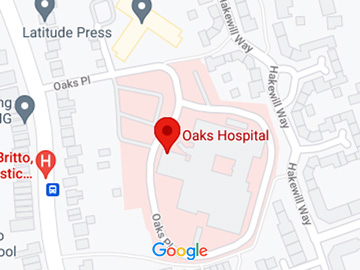
When it comes to skin damage, we may think we are in the clear once summer is over! But the obvious damage from the summer sun is equalled by hidden aggressors in the winter, and this is especially true during the festive holidays.
Christmas is a joyous time spent relaxing with family and friends, eating luxury food (and lots of it), drinking steamy hot chocolate, mulled wine and a host of festive beers, wines and cocktails. Most of us are lucky enough to take some time off, making time for long winter walks in the cold before returning to the cosy warmth of our homes, with the excuse to eat and drink some more!
Sounds perfect, but this indulgence can play havoc with our skin and waistline. Here at the Jonathan Britto Clinic, we love this holiday period, but we have some top tips and advice to protect your skin and achieve a healthy balance while joining the celebrations.
Winter temperatures
We know that the heat of the summer months poses a risk to our skin, which we protect against. But we need to be made aware of the challenges our skin’s health faces with a temperature drop. We must consider this when planning skin care programmes to adapt and protect from the changing environmental conditions.
One thing that remains constant throughout the winter and summer months is sun damage!
To understand this better, we should change our terminology around sun protection and refer to it as ‘light’ protection.
Light exposure (including light from our devices and screens) without protection can damage the skin and accelerate the signs of ageing. Daylight is made up of different lights, including ultraviolet light. When we consider the harmful risks of the sun, we focus mainly on UVB because of its burning effects, making it the main culprit for skin cancer. UVA is the other harmful ray, which we call the ‘ageing’ ray. UVA is emitted during daylight hours all year round, making up 95% of the ultraviolet rays and responsible for approximately 80-90% of skin ageing.
UVA surrounds us, penetrating clouds, fog, glass, and windows. The levels remain constant throughout the year. So, daily sun protection must be part of your winter routine.
Protecting our skin and eyes from UV damage in the winter sun is equally important. Wearing sunglasses will prevent repeated squinting, which can cause accelerated ageing around the eyes, appearing as’ crow’s feet’ and wrinkles.
UV becomes more harmful at altitude, becoming more intense as the air becomes thinner. For every 1,000 feet you go up, the UV exposure increases by 4% and fresh snow reflects 80% of UV radiation. So, if you’re planning a winter trip to the slopes, pack your SPF 50!
In winter, the level of UVB is less, which means that our vitamin D levels can drop, resulting in dry skin. Supplementing with vitamin D can help hydrate the skin, reduce dermatistis (itchy, dry skin or a rash) and eczema conditions, and regulate postbiotic antimicrobial peptides (AMPs), which help protect against bacterial, yeast, fungi, and virus invasion.
With outdoor temperatures plummeting, the heating in our homes, offices and cars goes up. The skin must adapt to these extreme changes in temperature and humidity. The skin regulates these changes by increasing and decreasing the size of the capillaries that network its deeper layers. These repeated dilations and constrictions cause stress on the vessel walls which, can then rupture and appear as ‘broken capillaries’, particularly on the cheeks and around the nose.
When moving between cold and hot environments, the increased blood flow that floods back into the skin causes skin flushing, mottled tone and risk of broken capillaries.
The skin’s barrier function is equally challenged during the winter months. Studies have shown that both water and temperature can compromise it.
Cold temperatures and humidity changes can lead to dry and itchy skin or deterioration of pre-existing skin problems. Trans Epidermal Water Loss (TEWL) increases, making the skin more susceptible to mechanical stress.
The skin’s inflammatory response is activated because of lower temperatures, making the skin more reactive to skin irritants and allergens, increasing the risk of eczema and dermatitis flaring.
The areas most affected by colder weather are the cheeks and hands. This is attributed to the breakdown of the protein filaggrin in the skin, which helps maintain the skin’s barrier function.
At a cellular level, skin cells suffer from shrinkage when exposed to cold, dry air. This further depletes the filaggrin reserves in the skin’s upper layers, resulting in textural changes: the skin becomes drier, rougher, and ‘flaky’.

Stress
Our introduction painted a picture of a beautiful family Christmas: spending time together, laughing, eating, drinking and generally having a wonderful time. But we all know that Christmas can be a very stressful time. The build-up to it can be financially and mentally draining. The expectations of the big day and the work involved with hosting a family Christmas can be exhausting.
Our skin contains receptors that perceive and respond to stress. Stress causes a cascade of hormonal, chemical and inflammatory changes in the body and the skin. Typically, these changes result from sustained, chronic stress. So, if you were already stressed before Christmas, you may find that your skin experiences outbreaks, rashes or other changes during the festive period.
Cortisol is known as the stress hormone. Our cortisol levels naturally change throughout the day. They are high in the morning (to help us wake up and be alert for the day ahead) and tail off throughout the day to aid sleep. Stress can significantly disrupt this natural flow.
Psoriasis, cold sores, and atopic eczema are influenced by stress mediators, which set off this chain of events that leads to skin inflammation and hormonal disruption. This impairs the skin barrier function, making dry, sensitised skin susceptible to acne breakouts. The increased oil production causes a build-up of bacteria and inflammation, leading to blocked skin and spots.
Changes in diet
Our diets change significantly as we move from the summer to the winter, and even more so during the festive period. Typically, our alcohol intake increases along with the amount of sugar we consume in sweet treats. Over-consumption of sugar accelerates the ageing process and can cause or contribute to a host of skin health issues.
Sugar leads to spikes in blood sugar, which elevates inflammation. This can make the skin appear red, dull, and unhealthy. Raised levels of inflammation over long periods, along with a compromised immune system, lead to a phenomenon known as inflammaging.
Sugars’ glucose and fructose attach to the proteins in collagen and elastin fibres, causing a phenomenon known as glycation, which produces AGEs (Advanced Glycation End Products). The build-up of AGEs prevents the fibres from repairing themselves and accelerates skin ageing.
Alcohol has hidden sugars, and some brands add a lot of sugar for sweetness. Sugary mixers, sodas, and fruit juices elevate the sugar content even higher.
Our mentored skin health programmes at the Jonathan Britto Clinic accommodate seasonal changes. Combined with Lifestyle Medicine programmes, we can ensure your skin is at its best inside and out.
Top tips for winter skin
- Wear sunglasses to protect your eyes from UV damage, glare, wind, and cold. Look for the CE mark or UV400 mark, which shows that the sunglasses provide adequate protection.
- Continue to use sun protection with an SPF of 30 or above. If you’re going on a ski trip, wear a higher-factor protection and apply it regularly throughout the day.
- Avoid long hot baths, showers and hand washing as this can lead to dryness and irritated skin.
- Wear lip balm ideally with an SPF to protect the delicate lip skin.
- Oral supplementation of Vitamin D and increase omega-3 in the diet.
- Keep an eye on your sugar intake and try healthier options where possible.
- Take time out for self-care and maintain an 8-hour sleep period.




